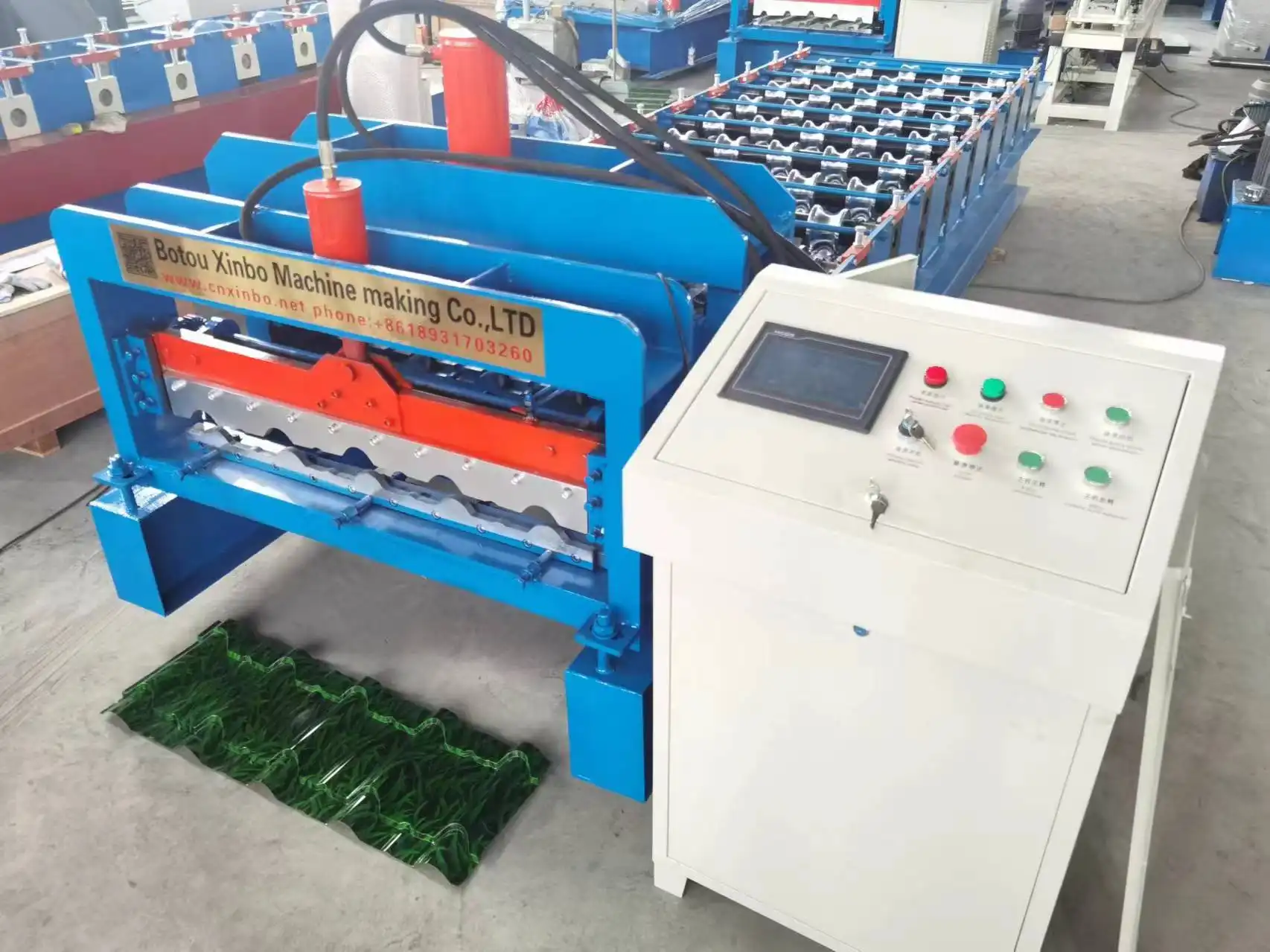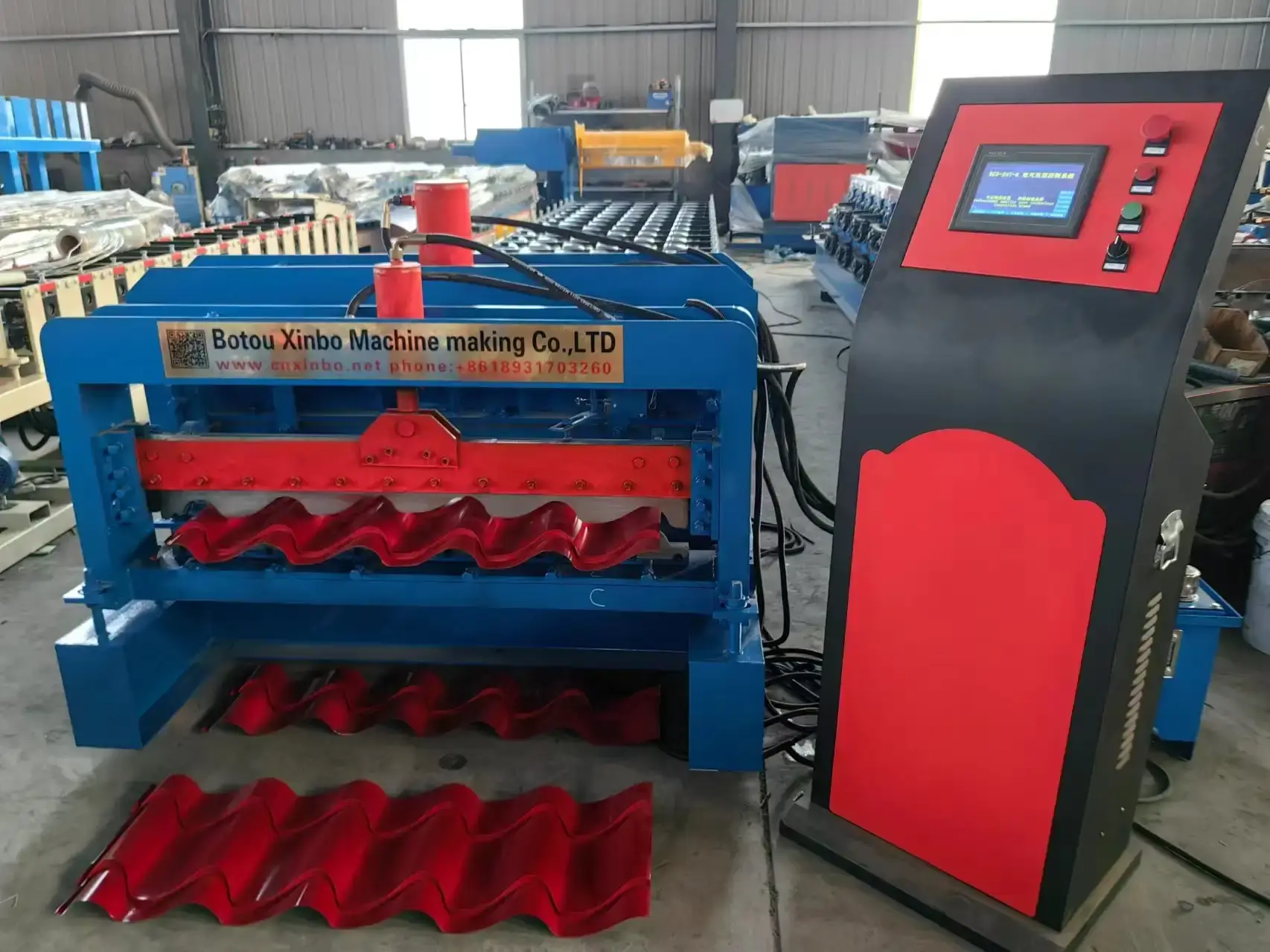Good quality
XinBo machine making CO. LTD is a professional manufacturer and exporter in roll forming machine,
VIEW MORE→Metal roofing presents a versatile and durable solution for a wide range of architectural applications, encompassing both residential and commercial structures. This robust roofing option employs metal sheets or tiles, offering a superior alternative to traditional materials due to its exceptional longevity and resilience. Renowned for its capacity to endure extreme weather conditions, metal roofing is particularly favored in regions that experience high winds, heavy rainfall, and significant snowfall.

XINBO Machine Making Co. Ltd is a reputable manufacturer specializing in metal forming machines. They offer innovative technology, customization options, and a commitment to quality assurance. New and innovative technology,such as Purlin Roll Forming Machine, for the Europe, UK and Canada, as customer’s request and class. And we also have standard class for normal consumption.
Several types of metals are typically used in metal roofing, each offering distinct advantages depending on the specific application. The most common metals include:
Metal roofing can be found across a variety of applications due to its versatility and performance benefits. Common uses include:
The popularity of metal roofing in modern construction is driven by several key advantages that make it superior to other roofing materials.
Metal roofing is highly durable and can last up to 50 years or more with proper maintenance. It is resistant to cracking, shrinking, and eroding, which are common issues with traditional roofing materials like asphalt and wood. This durability translates into significant long-term savings as it reduces the frequency and costs associated with roof repairs and replacements.
Another major advantage of metal roofing is its energy efficiency. Reflective metal roofs can reduce cooling costs by reflecting solar heat away from the building. This performance helps reduce the strain on air conditioning systems during hot summers, leading to lower energy consumption and utility bills. Some metal roofs are also designed to insulate buildings effectively, thereby also aiding in winter energy savings.
Metal roofs require minimal maintenance compared to other roofing materials. They are resistant to common roofing problems such as rot, mold, and pest infestations. Routine inspections and occasional cleanings are typically sufficient to maintain the roof’s appearance and performance, saving homeowners and building managers time and money on maintenance tasks.
Metal roofing is one of the most environmentally sustainable roofing options available. Most metal roofing materials are made from recycled content, and at the end of their long life, they are 100% recyclable. The energy-efficient properties of metal roofs also contribute to lower carbon footprints by reducing energy consumption. These factors make metal roofing an attractive option for those looking to incorporate green building practices.

In recent years, the manufacturing process of metal roofs has seen considerable innovation, largely due to advances in metal roofing machines. These machines have revolutionized the production of metal roofing sheets, making the process faster, more precise, and cost-efficient. Automated systems and computer-aided designs ensure that roofing panels are produced with high accuracy and consistent quality, which is crucial for both small and large-scale construction projects.
One of the standout features of modern metal roofing machines is their ability to offer precision and customization. Builders and architects can now design roofs that are custom-tailored to specific dimensions and requirements, reducing material waste and ensuring a perfect fit. This level of customization is particularly beneficial in unique architectural designs and renovation projects where non-standard dimensions may be required.
The use of advanced metal roofing machines has significantly enhanced production speed. Automated systems can produce large quantities of roofing material in a fraction of the time it would take using traditional methods. This increase in production speed not only reduces construction timelines but also lowers labor costs, making metal roofing more affordable and accessible for a wider range of projects.
When it comes to longevity, metal roofs surpass many traditional roofing materials by a considerable margin. While asphalt shingles might last 15 to 30 years, a well-installed metal roof can last 50 years or more with minimal maintenance. This extended lifespan is due to metal’s inherent resistance to elements such as UV rays, rain, wind, and temperature fluctuations. The durability of metal roofs translates into fewer replacements and repairs over time, making it a more sustainable and cost-effective choice in the long run.
Initially, metal roofs may present a higher upfront cost compared to other materials like asphalt shingles. However, the long-term savings in maintenance, energy efficiency, and replacement costs make metal roofing a more cost-effective option. With lower maintenance needs and greater durability, homeowners and businesses end up saving money on frequent repairs and replacements. Additionally, the energy-efficient properties of metal roofs can lead to reduced utility bills, further offsetting the initial investment.
Metal roofs offer a high degree of aesthetic versatility, available in various styles, colors, and finishes to match different architectural designs. Whether opting for a sleek modern look or a traditional appearance mimicking shingles or tiles, metal roofing can accommodate diverse aesthetic preferences. This flexibility allows property owners to choose a roof that not only performs well but also enhances the visual appeal of their building. Metal’s ability to be molded into different shapes and forms also supports custom architectural designs, adding to its aesthetic versatility.
XINBO offers ODM (Original Design Manufacturing) services, ensuring that their machines are designed and made according to customers’ requests. They have a team of professional engineers and technicians who can design detailed drawings based on customers’ needs in a short time. Additionally, XINBO’s in-house workshop and CNC machining machines help save costs and ensure efficient production processes.
When selecting metal roofing, it is crucial to consider the local climate. Metal roofs are known for their durability in extreme weather conditions, but different metals may perform better in specific environments. For instance, aluminum is highly resistant to corrosion and ideal for coastal regions with high salt exposure. Conversely, in colder climates, metal roofs can efficiently shed snow, preventing the build-up of ice dams. It’s essential to match the type of metal with the specific weather challenges of the area to maximize performance and lifespan.
While metal roofing offers numerous advantages, it comes with certain installation challenges that must be addressed. Proper installation is critical to ensure the roof performs optimally. Metal roofing panels are typically more extensive and heavier than other materials, requiring skilled labor and specialized tools for installation. Poorly installed metal roofs may develop issues such as leaks or ineffective thermal performance. Therefore, hiring experienced professionals knowledgeable in metal roofing installation techniques is essential to avoid common pitfalls and ensure the roof’s longevity and effectiveness.
Choosing metal roofing represents a significant long-term investment. Although the initial cost may be higher compared to other roofing materials, the longevity, durability, and energy efficiency of metal roofs can result in substantial savings over time. Property owners should consider factors such as reduced maintenance expenses, energy savings, and potential increases in property value when evaluating the overall return on investment. Furthermore, metal roofs’ eco-friendly attributes can enhance the property’s marketability, appealing to environmentally conscious buyers and potentially offering additional financial benefits.
The metal roofing industry is poised for continued growth, driven by technological advances in metal roofing machines. Innovations in automation, precision cutting, and design capabilities are further enhancing the efficiency and quality of metal roof production. These advancements include the development of portable roll-forming machines, which allow on-site production and customization of metal roof panels. Such technology reduces waste, minimizes transportation costs, and speeds up the installation process. As technology continues to evolve, it is likely that metal roofing machines will become even more sophisticated, offering unparalleled precision and efficiency.
Historically, metal roofing has been more prevalent in commercial and industrial construction. However, there is a growing trend towards its adoption in residential settings. Homeowners are increasingly recognizing the benefits of metal roofing, such as its aesthetic versatility, durability, and energy efficiency. Advances in design have resulted in metal roofing options that mimic traditional residential roofing styles, making them more appealing to a broader audience. This shift in the market indicates a significant opportunity for growth in the residential sector, driven by consumer awareness and technological improvements.
Sustainability is a key focus for the future of the metal roofing industry. As environmental concerns become more pressing, there is a growing emphasis on green building practices and the use of eco-friendly materials. Metal roofs, made from recyclable materials and offering energy-saving benefits, align well with these sustainability goals. Future trends may include the incorporation of solar panels and reflective coatings that enhance the environmental performance of metal roofing systems. Additionally, manufacturers and builders are likely to further adopt practices that minimize waste and reduce the environmental impact of production and installation processes. These sustainable practices not only benefit the environment but also appeal to property owners looking to reduce their carbon footprint and comply with green building standards.

XinBo machine making CO. LTD is a professional manufacturer and exporter in roll forming machine,
VIEW MORE→

